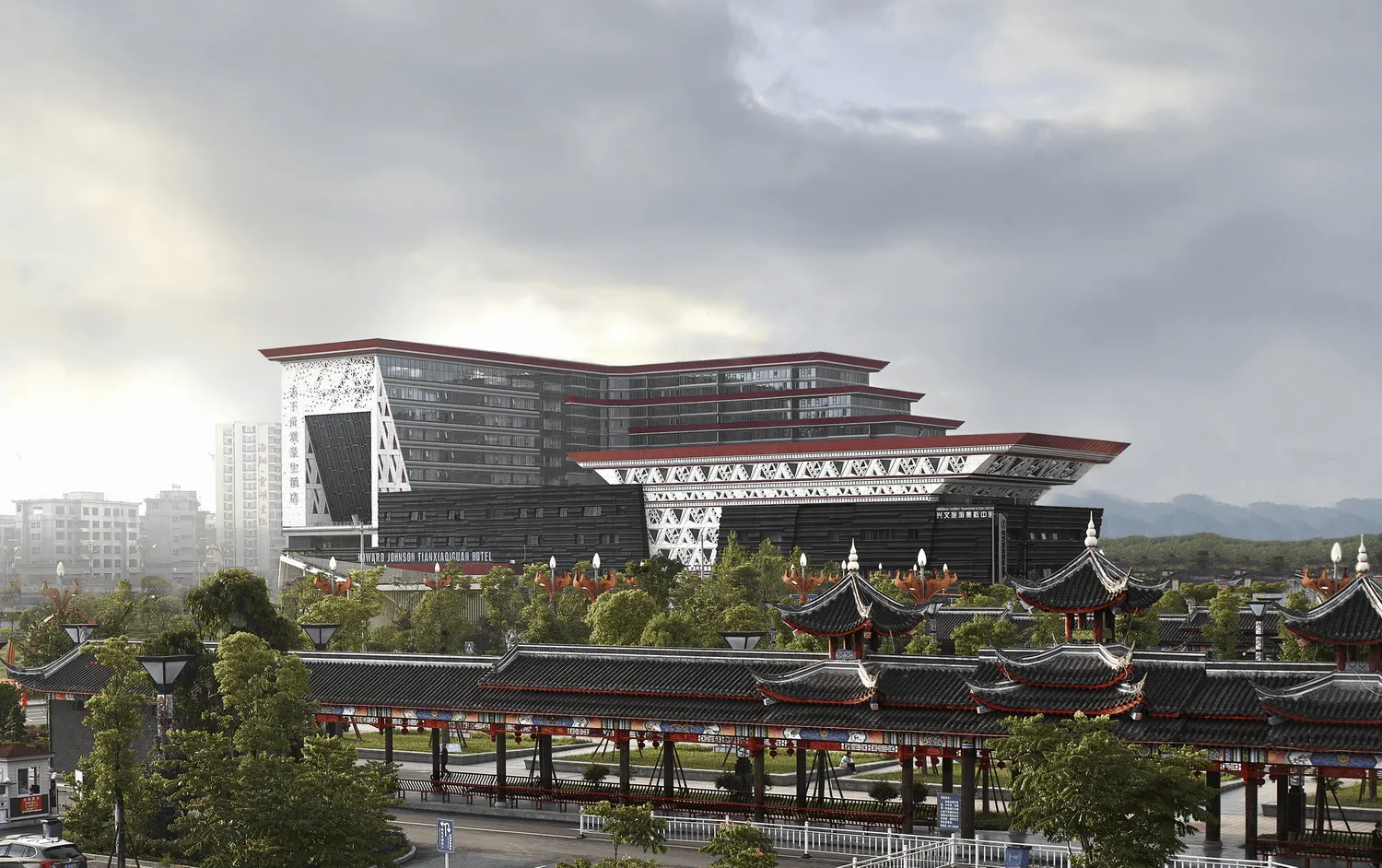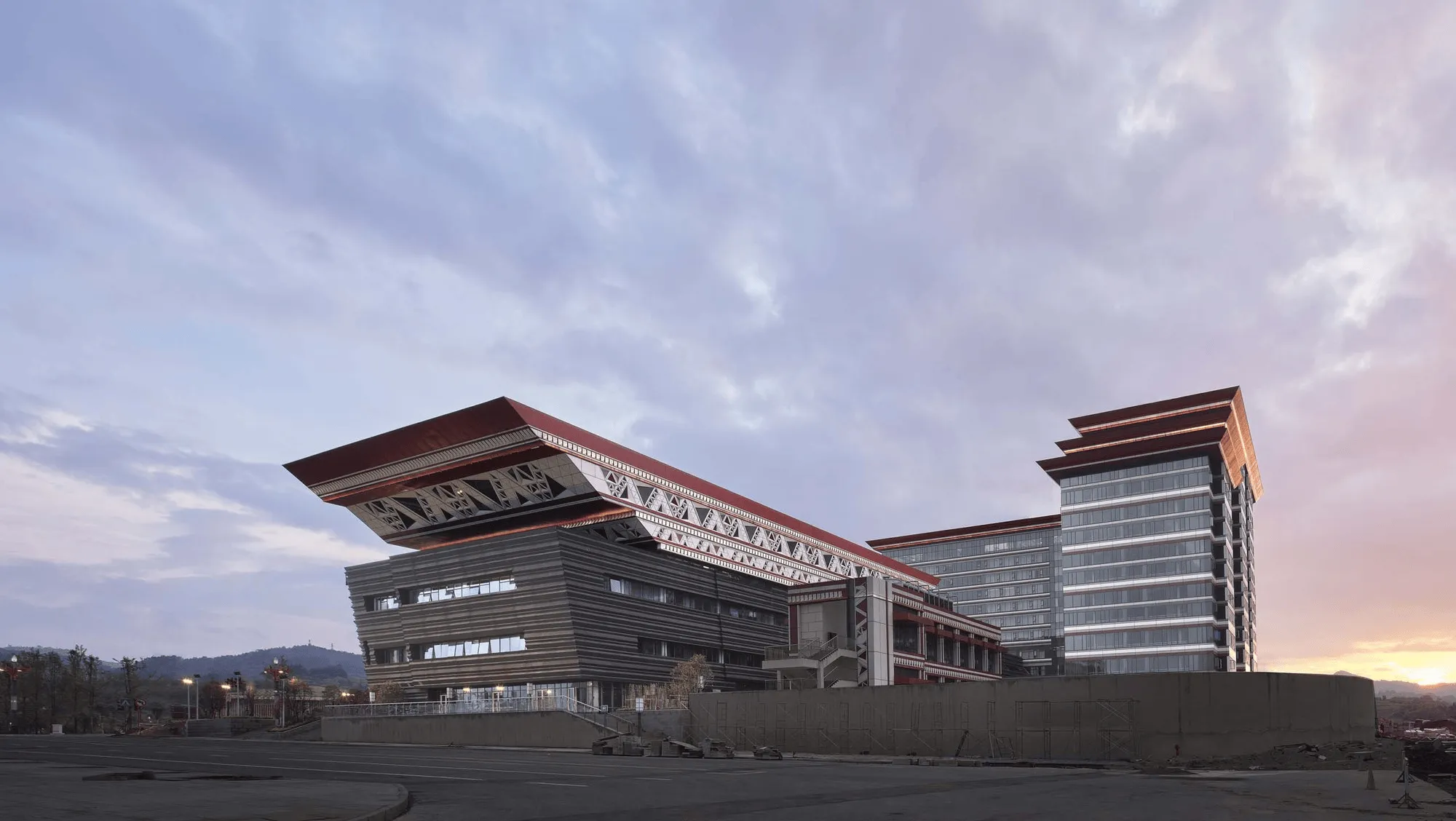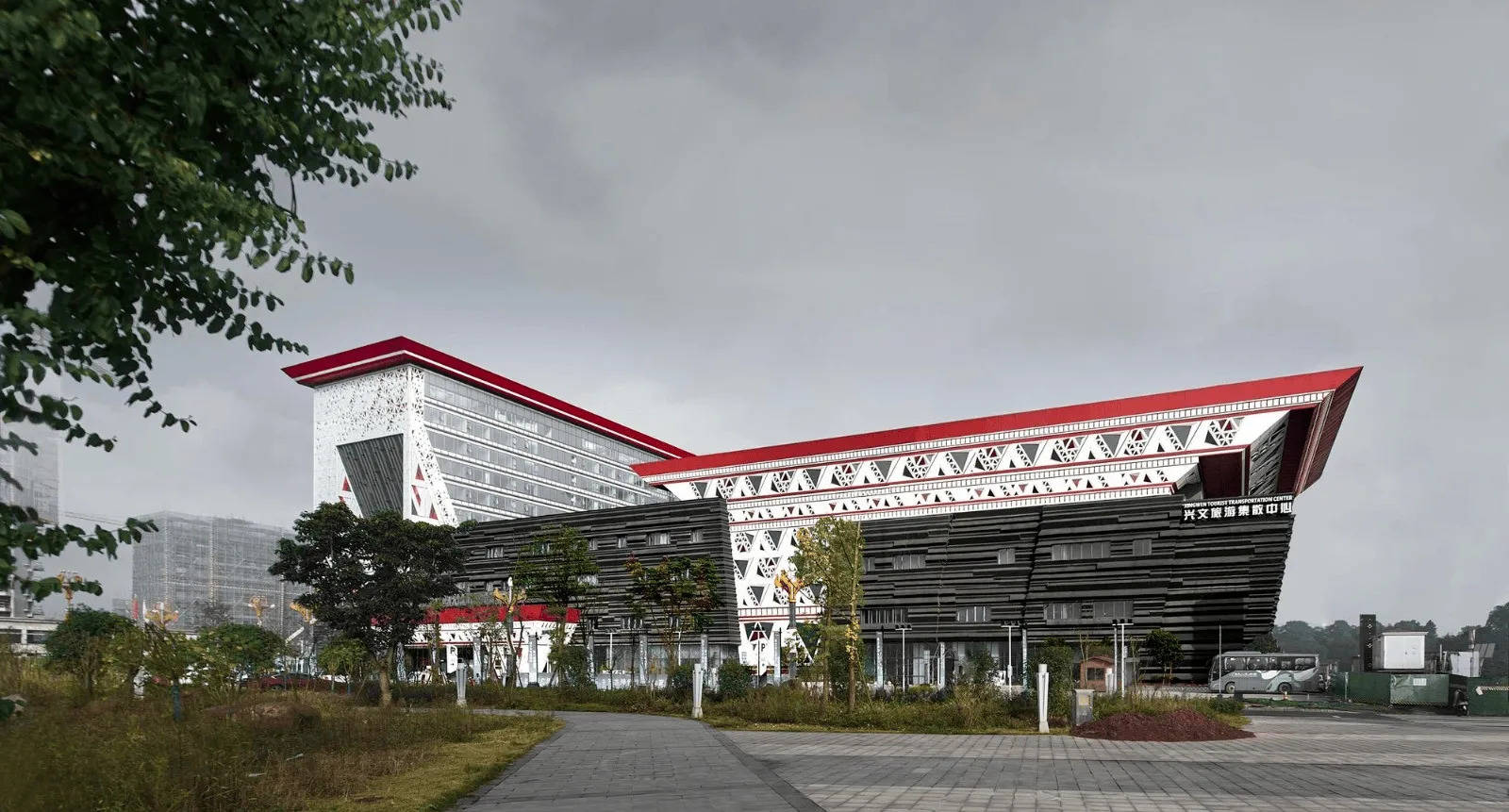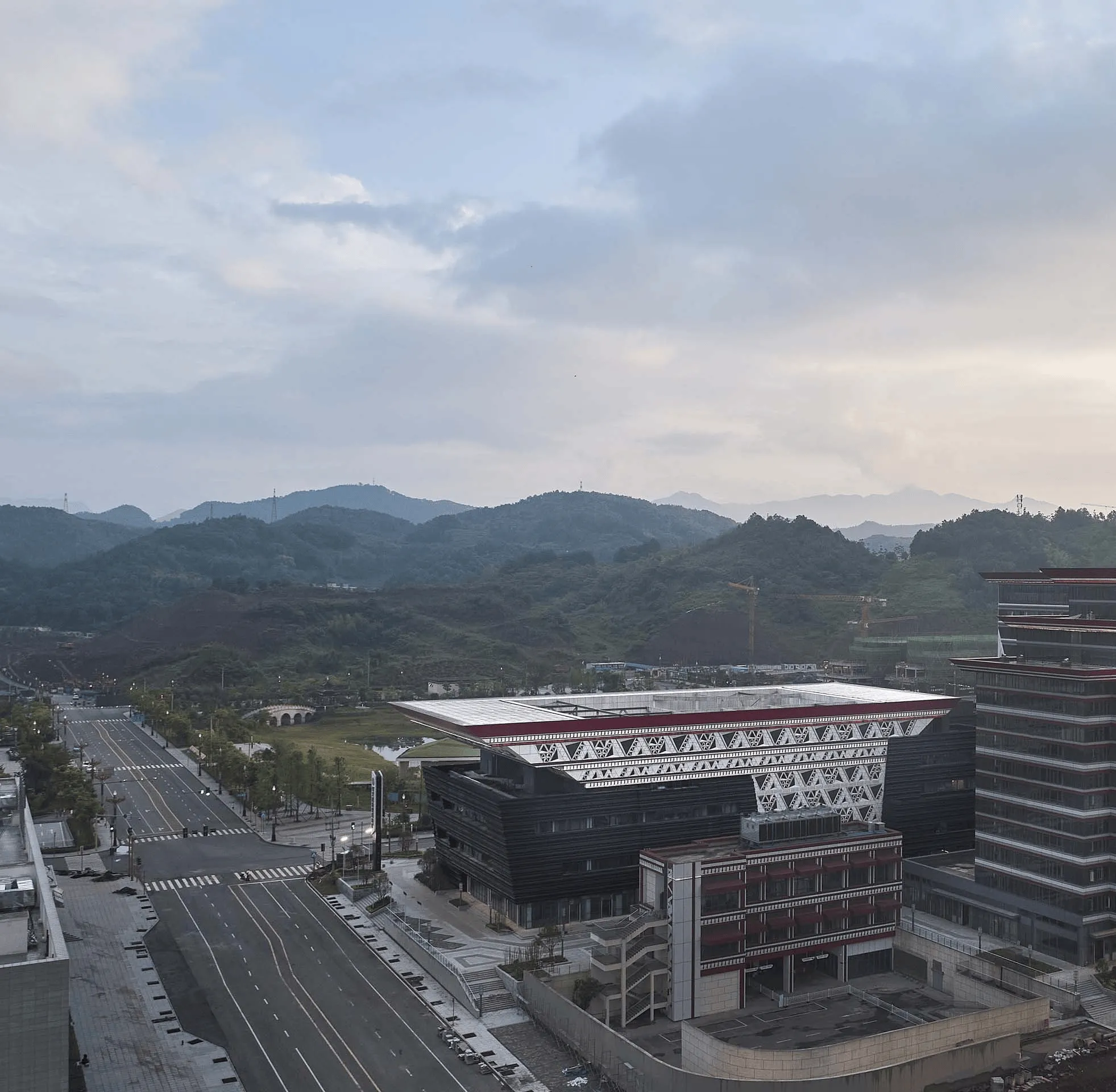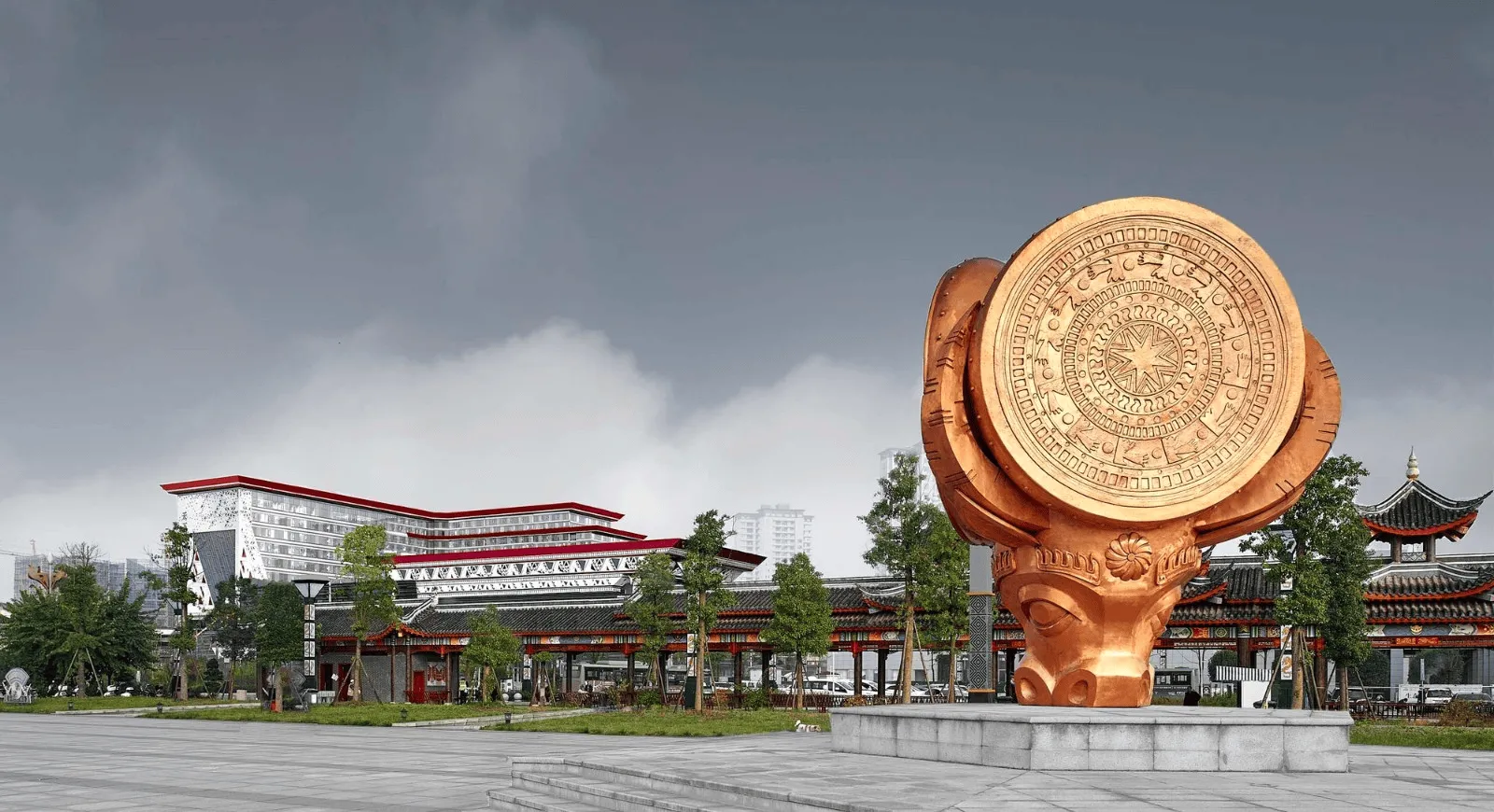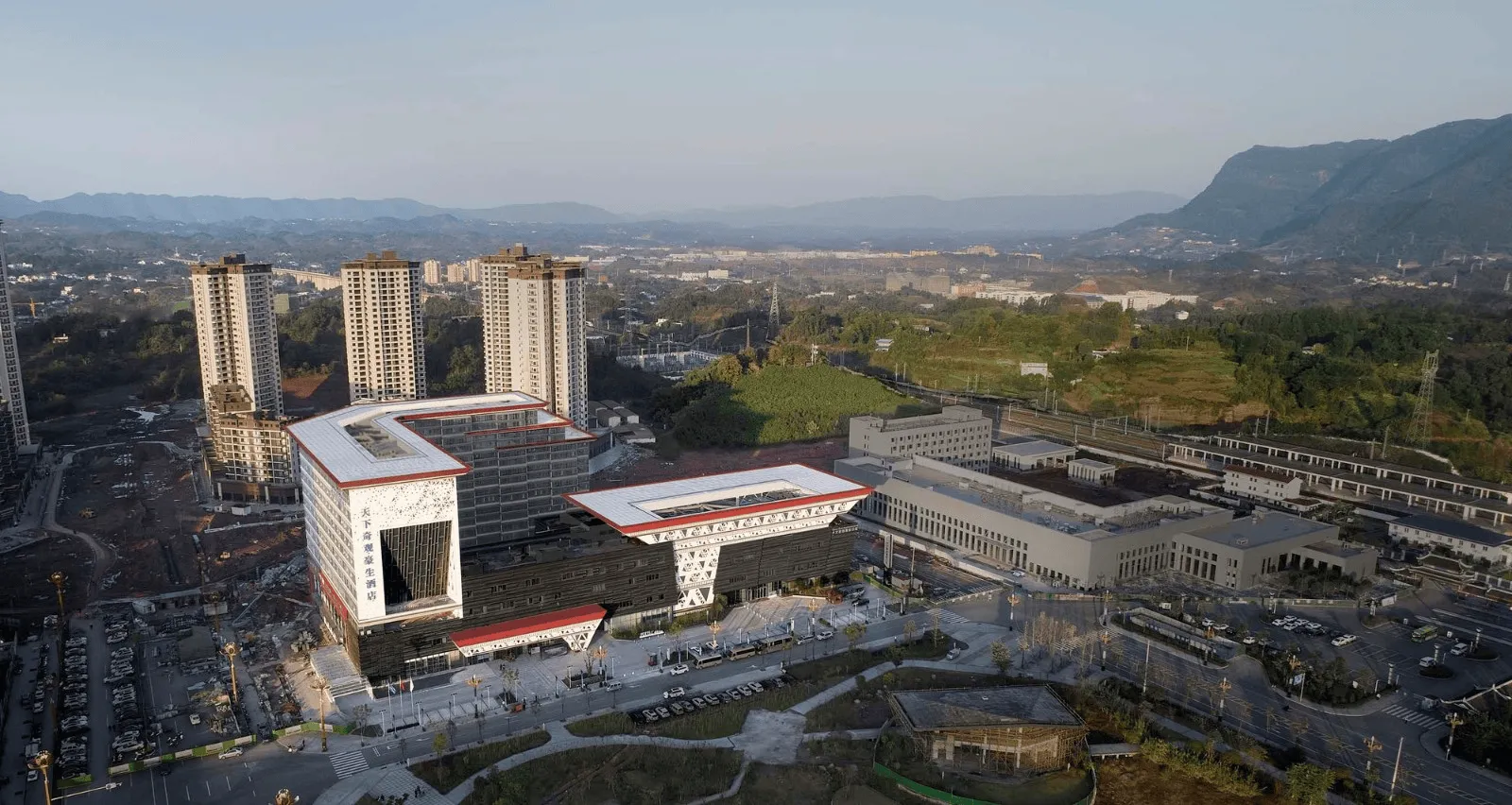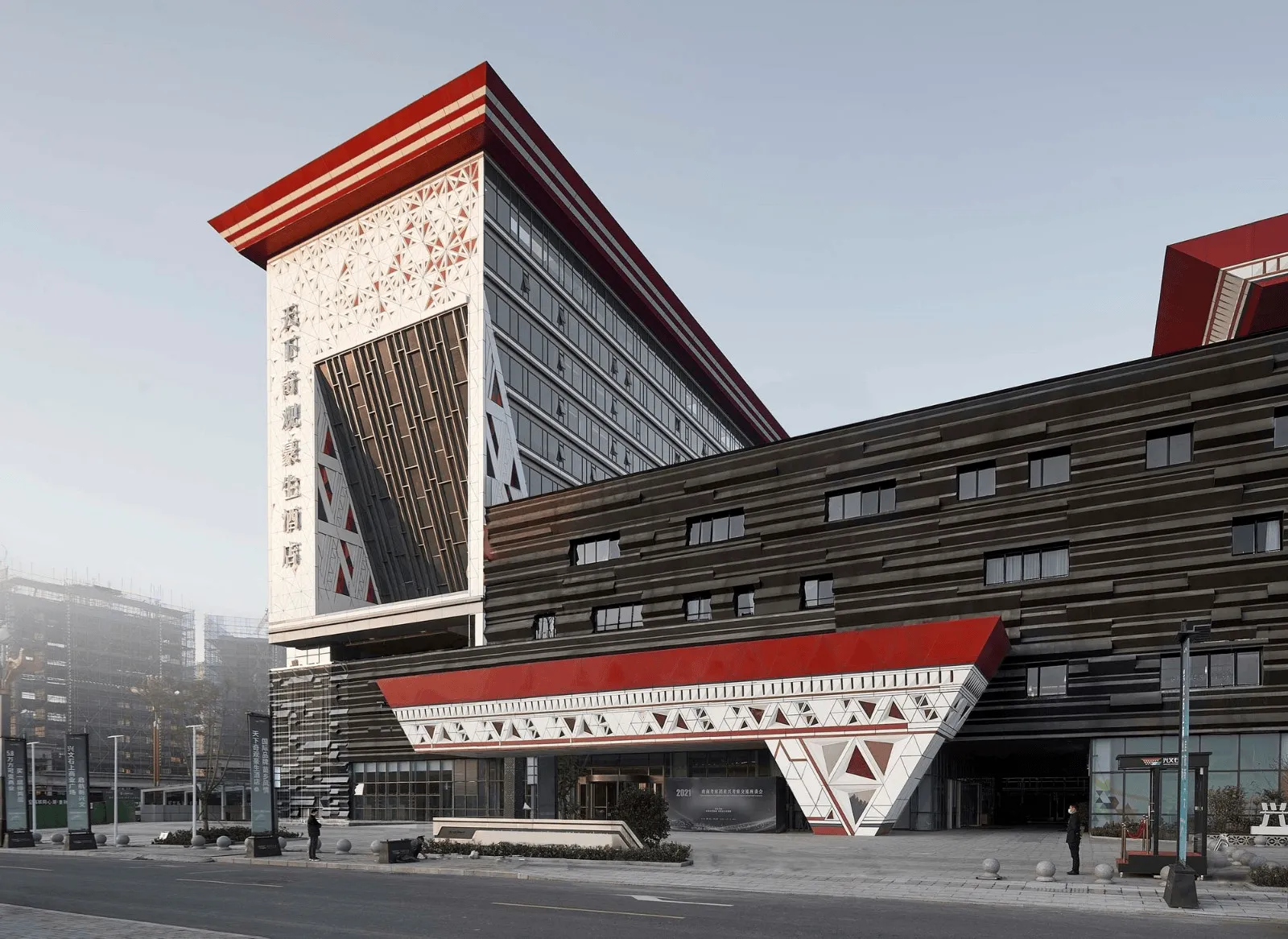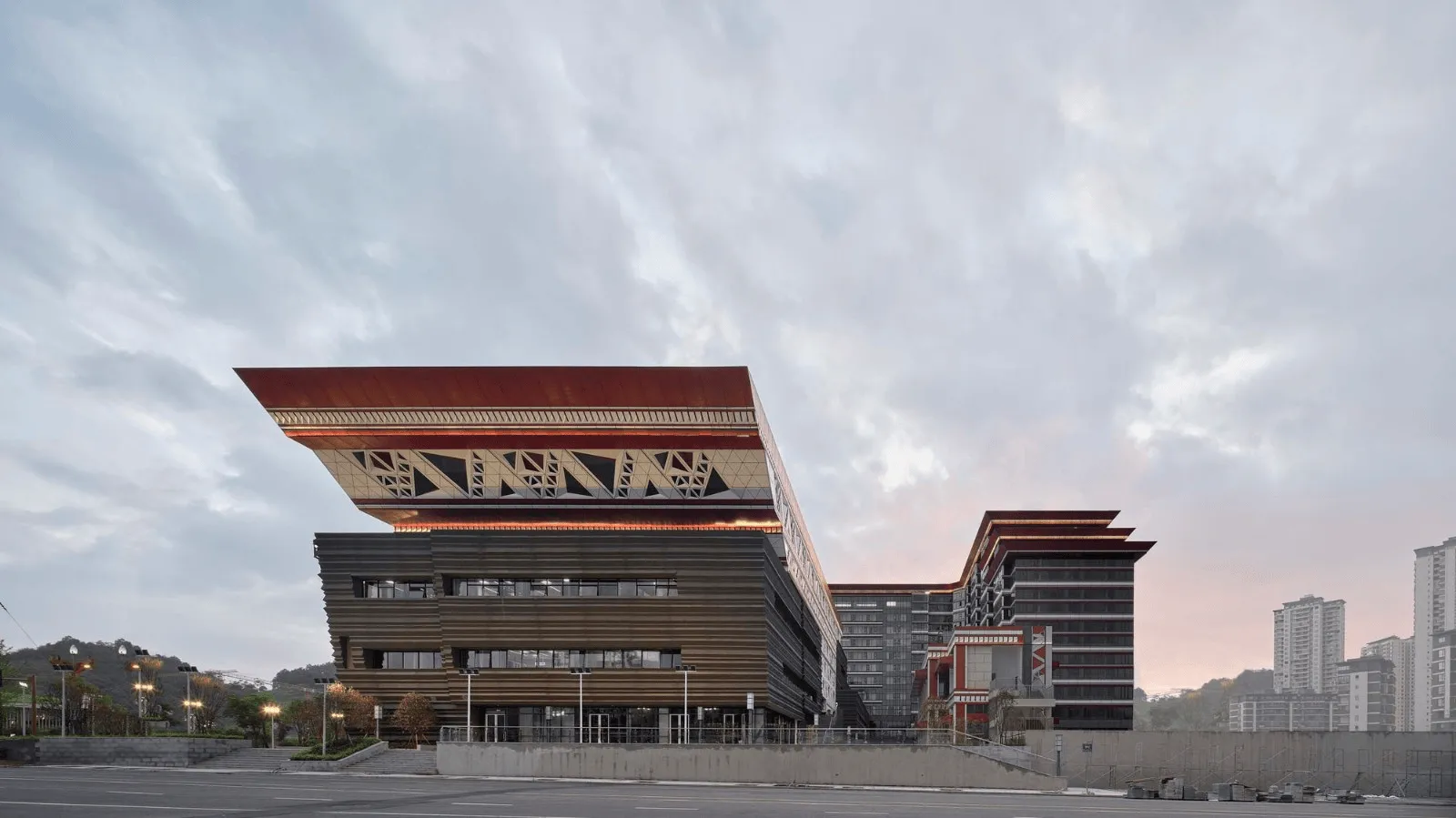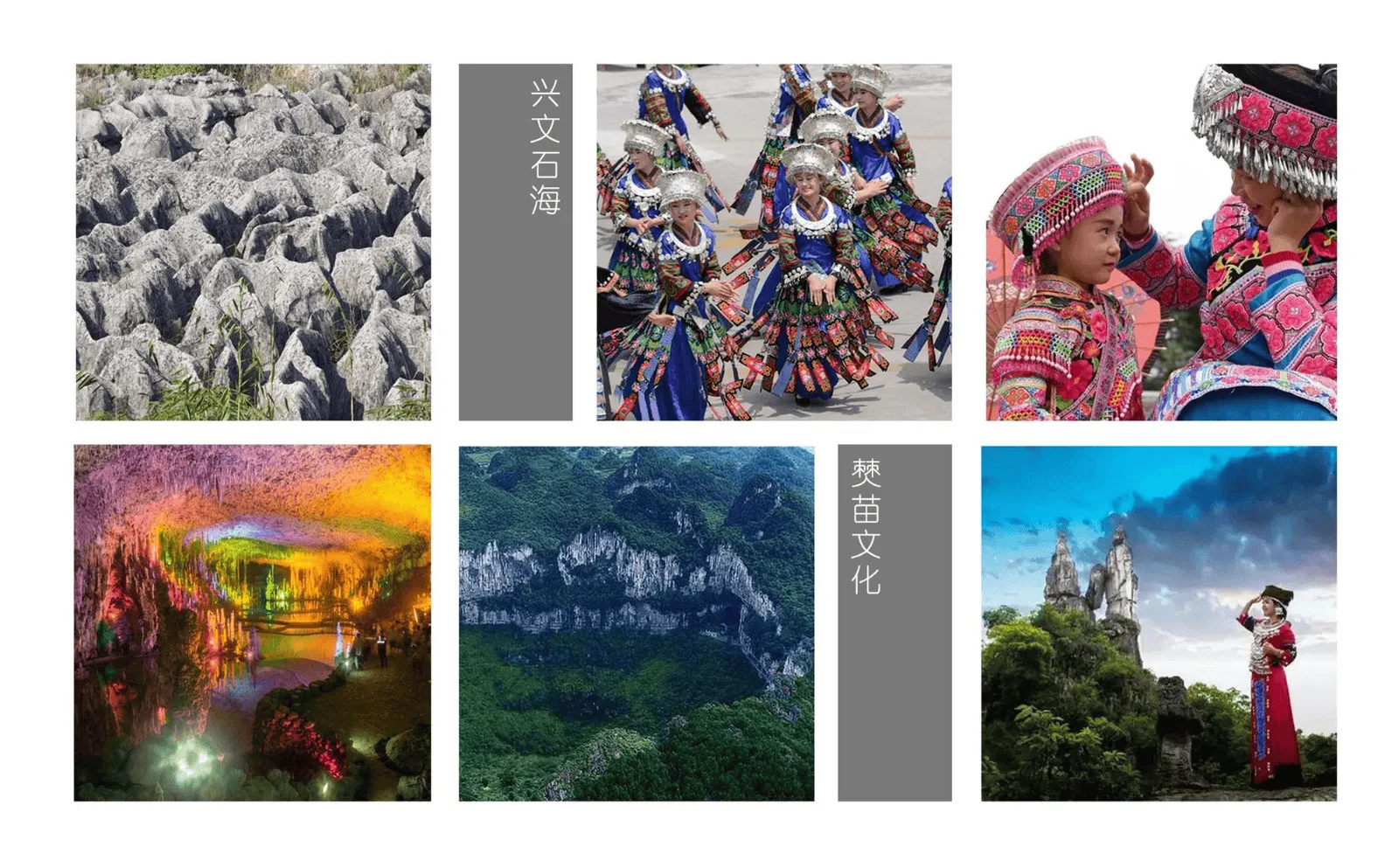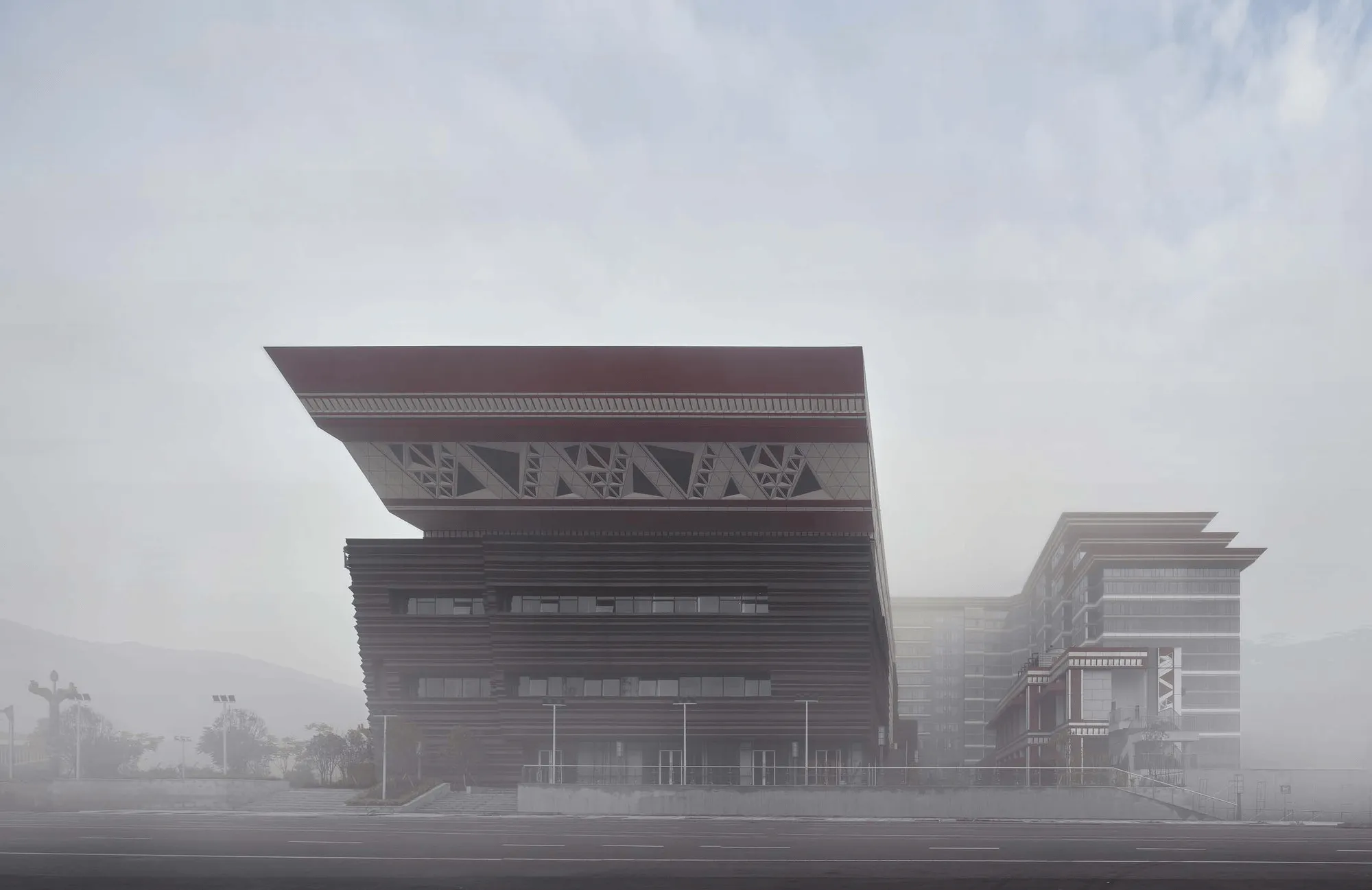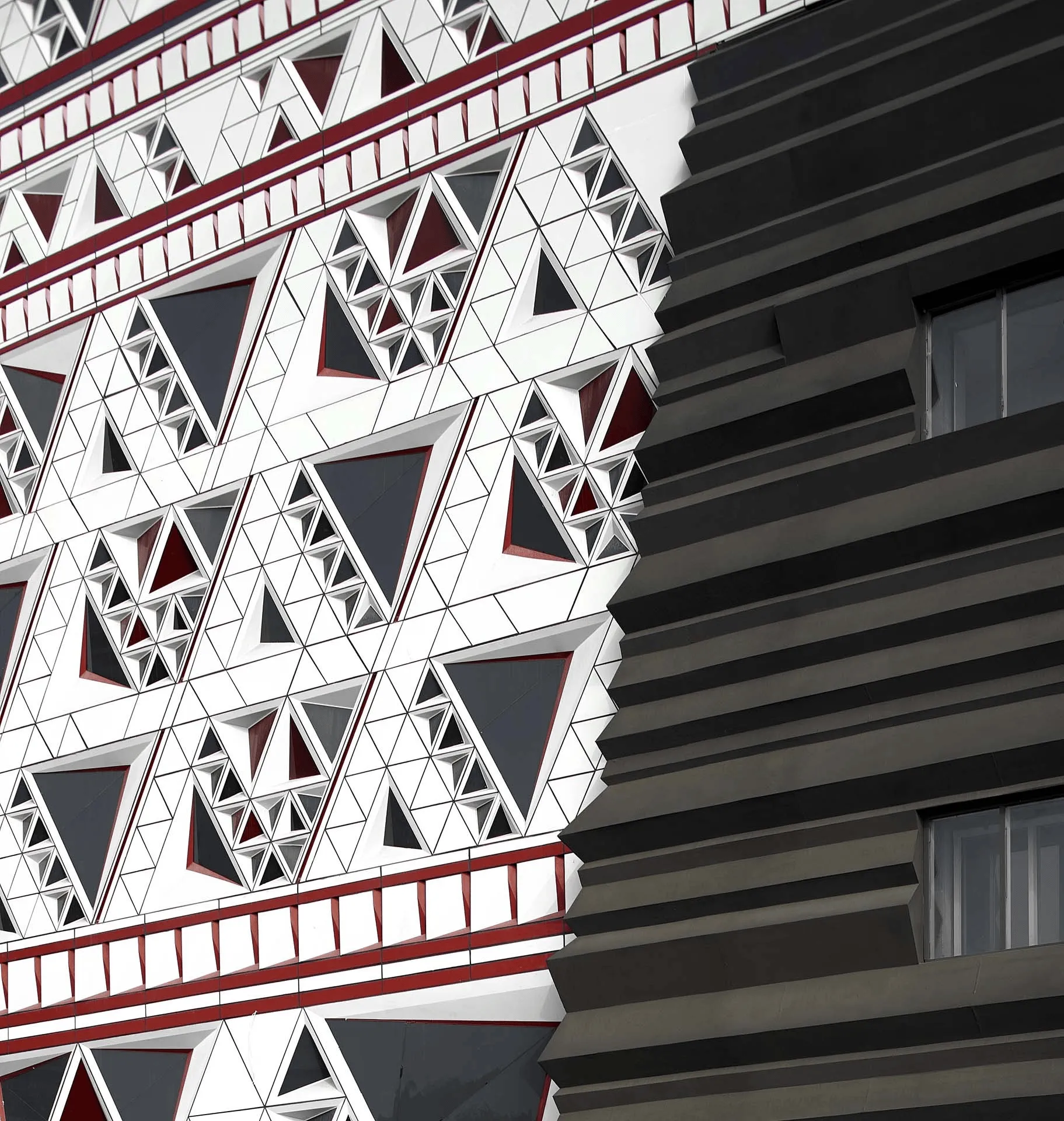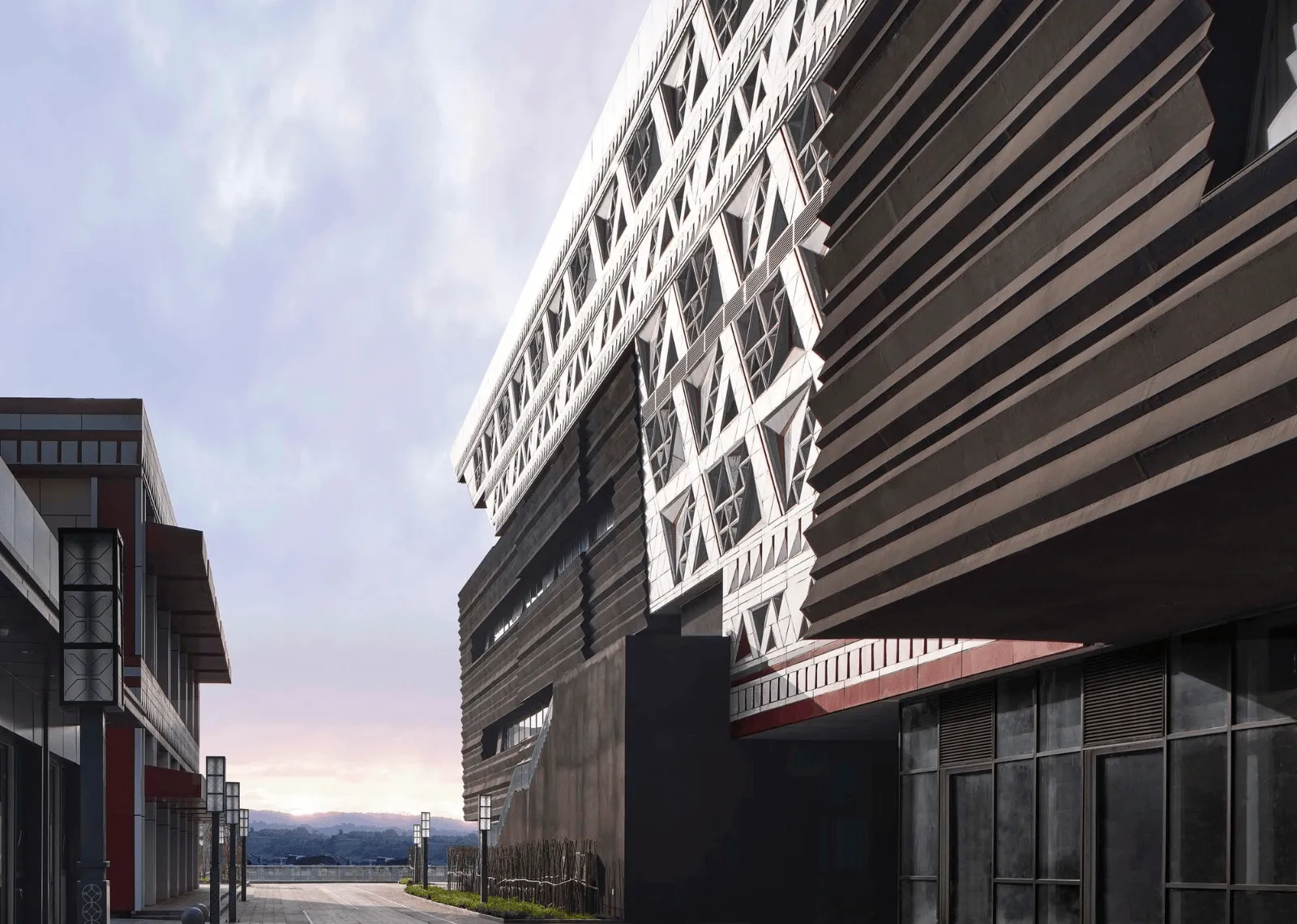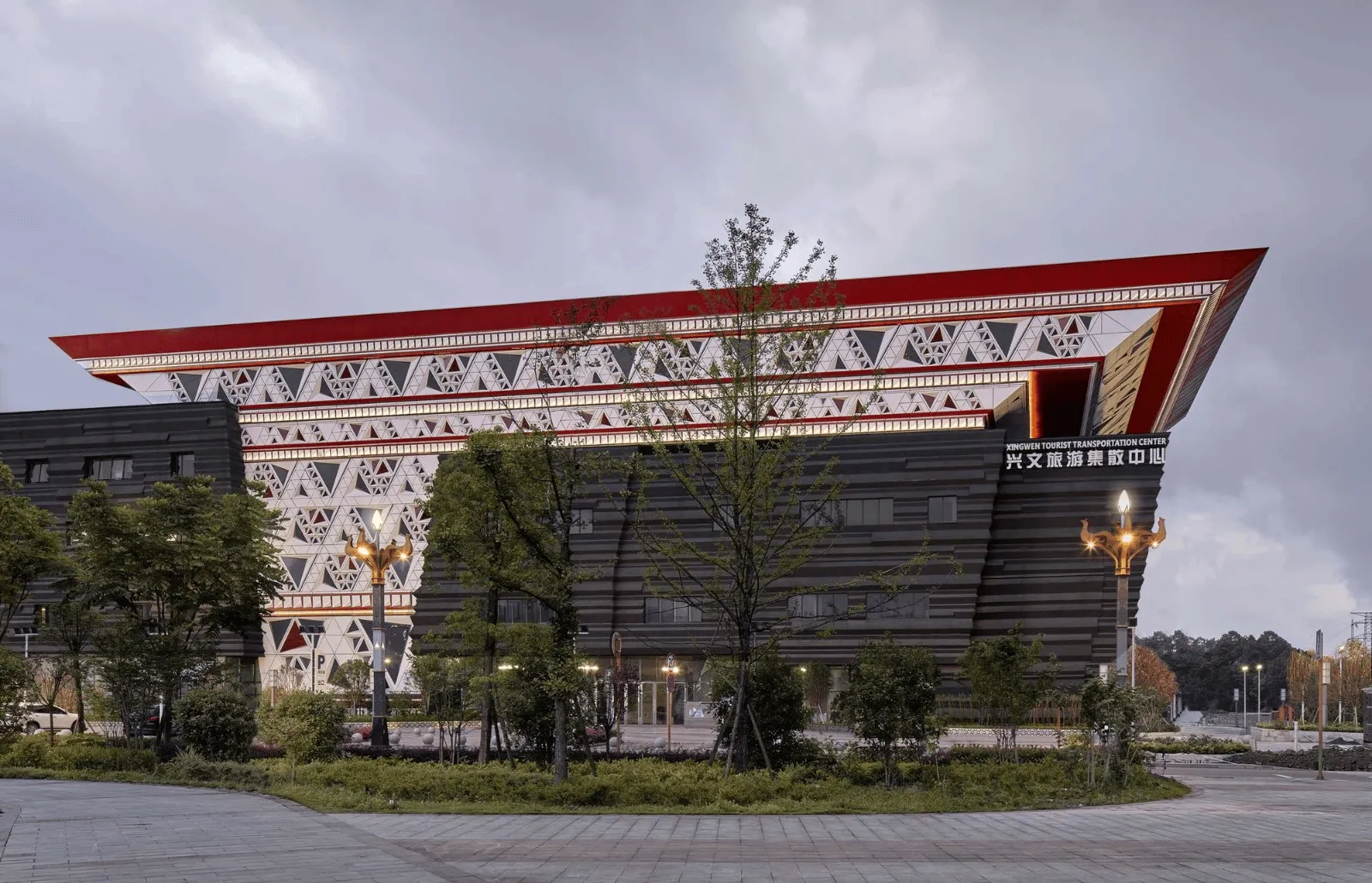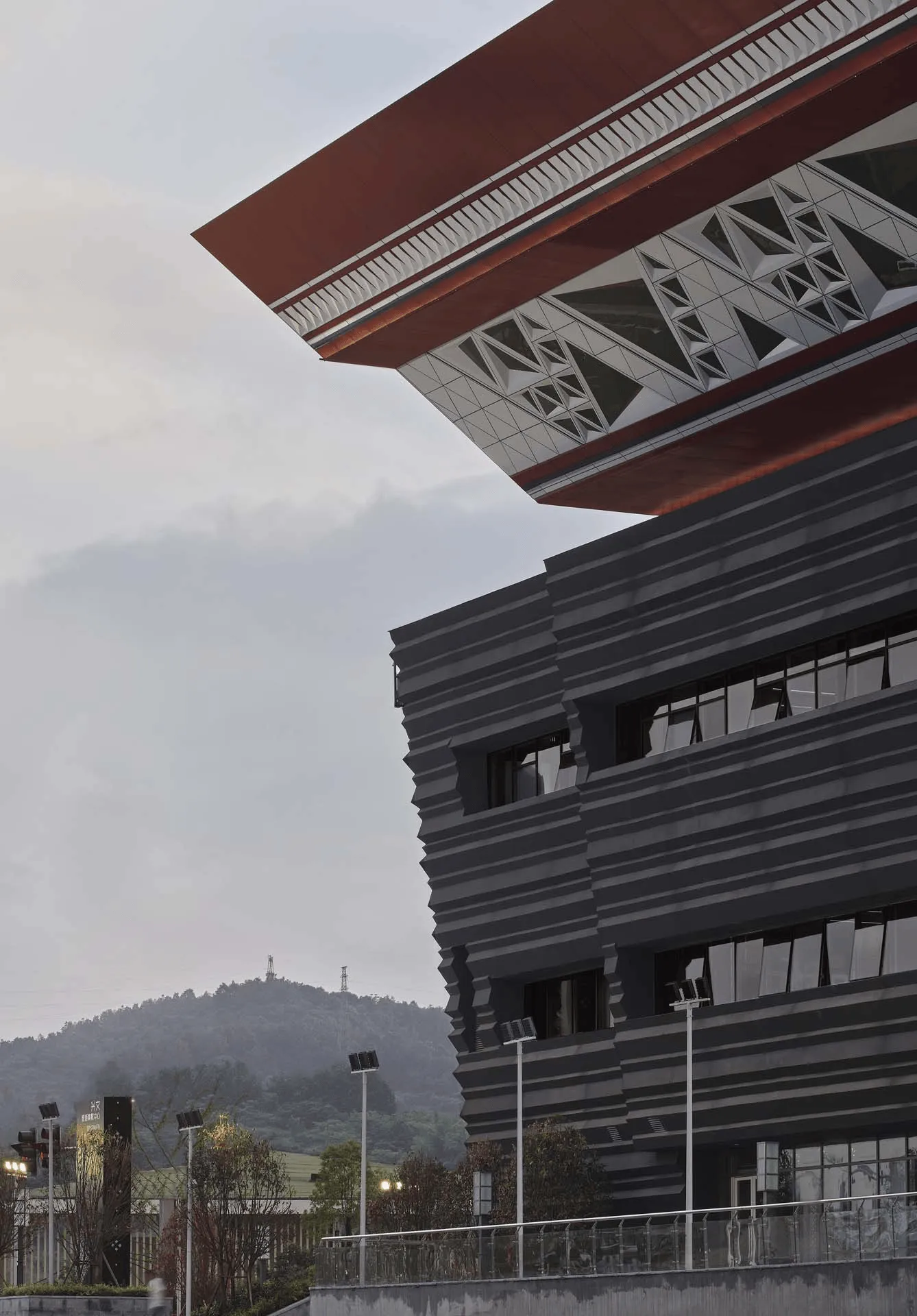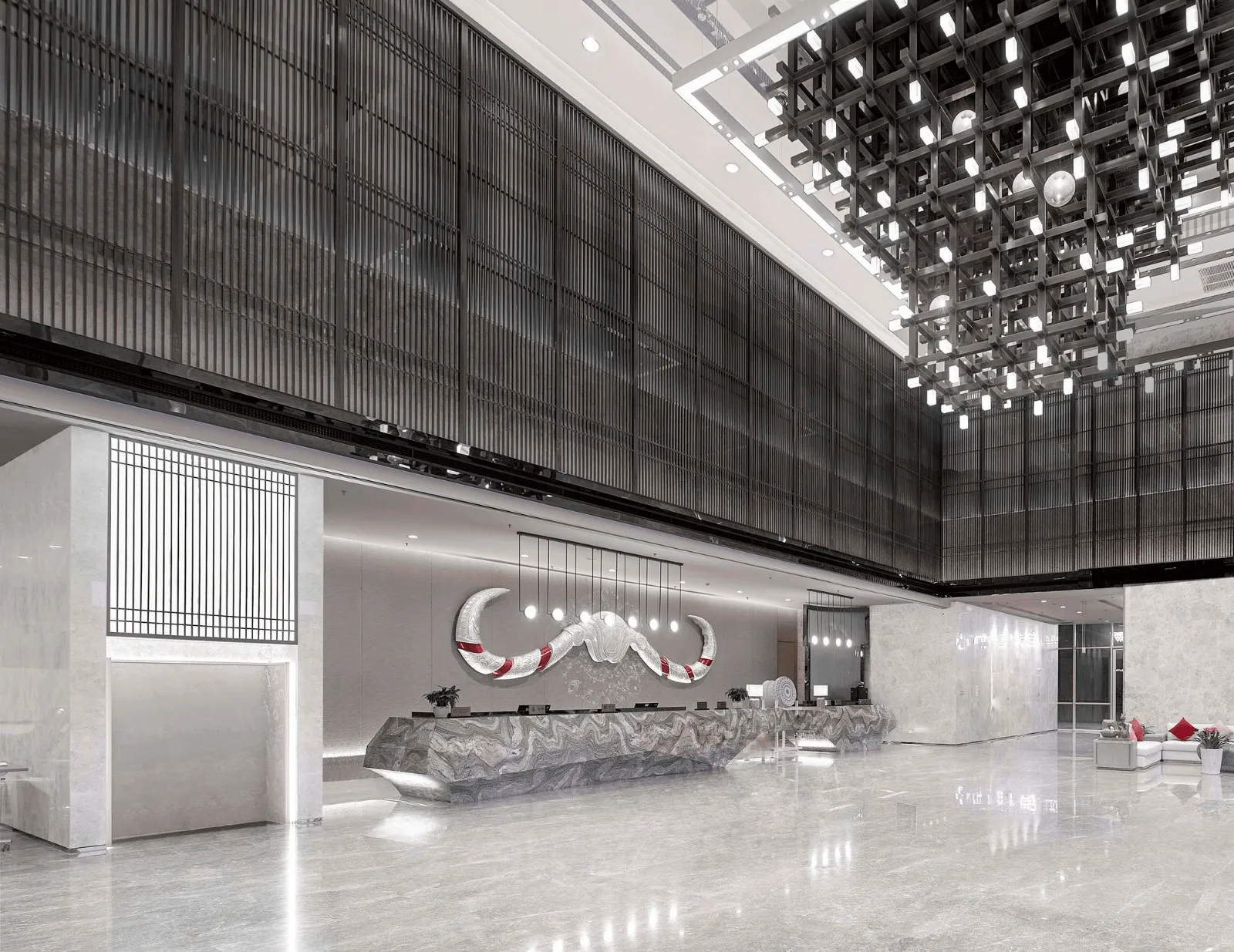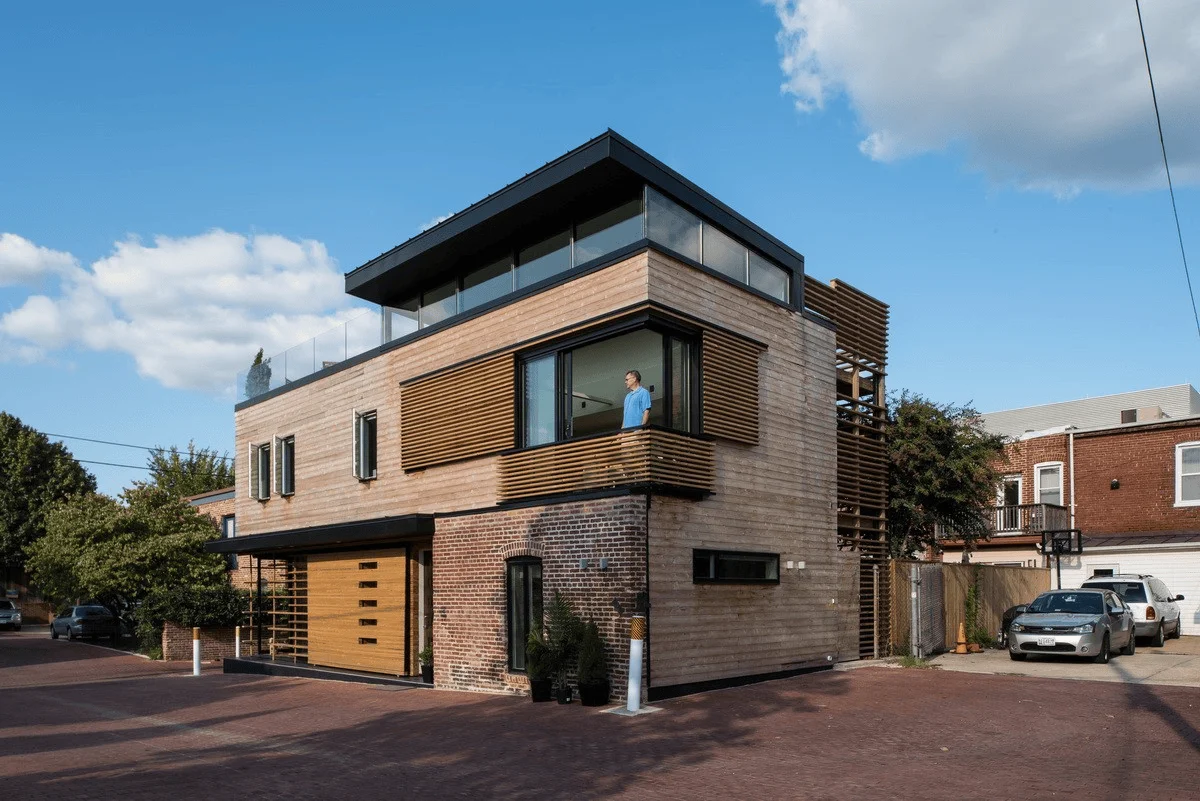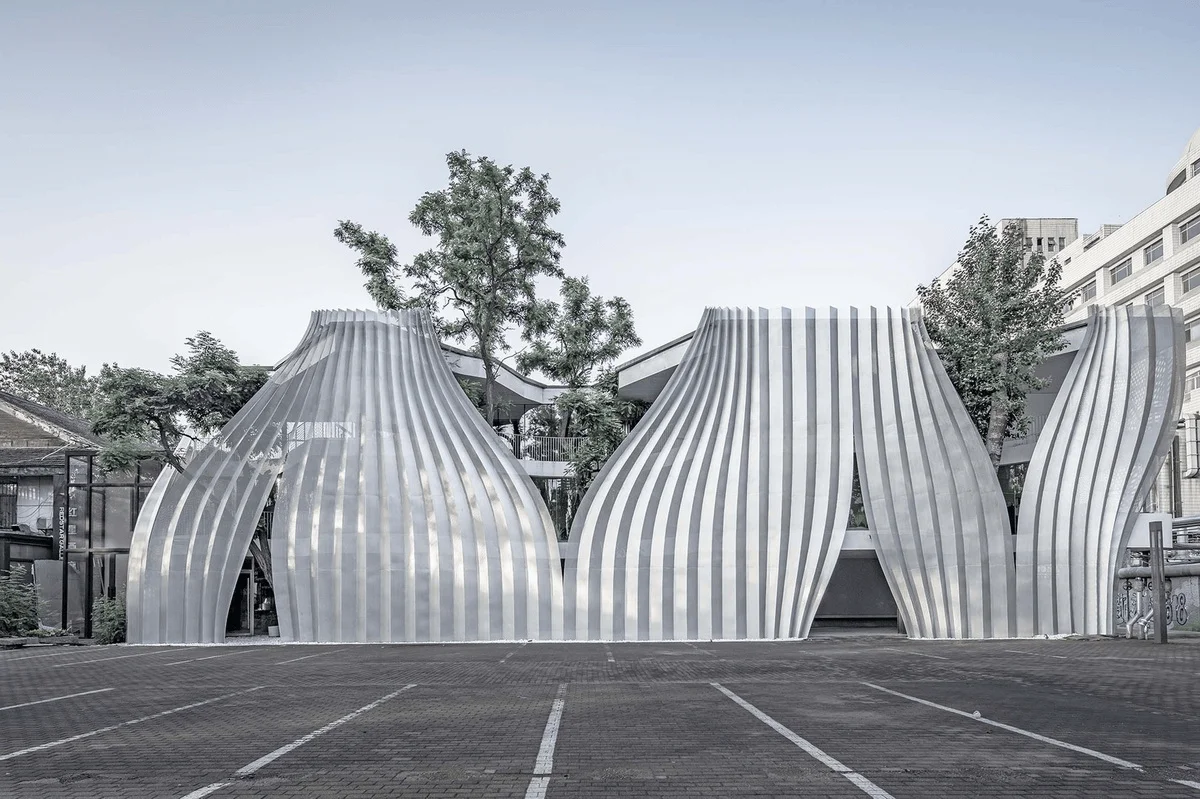Nestled amidst the picturesque landscape of Xingwen County in Yibin City, Sichuan Province, the Xingwen Stone Sea, a world-renowned geological park, boasts stunning natural wonders. This unique destination is also a historical site where the ancient Bo people lived and eventually perished. The cultural landscape of the Stone Sea, interwoven with the traditions of the Bo and Miao ethnic groups, offers a world-class tourist experience. The Xingwen Stone Sea World-Class Tourist Destination Visitor Center is strategically positioned in the heart of Xingwen County, adjacent to the high-speed rail station and the long-distance bus terminal. As a landmark cultural and tourism building and the gateway to the city of Xingwen, it serves as a bridge connecting the city with nature, culture, and the environment. This project aims to further enhance the development of tourism services, cultural displays, and related industries in the Xingwen Stone Sea region. The design team sought inspiration from three core dimensions: urban space, regional characteristics, and ethnic emotional colors. The goal was to create a unique and captivating urban visitor center. Unlike visitor centers located within scenic areas, the Xingwen Stone Sea World-Class Tourist Destination Visitor Center functions as a city-based hub that blends distinct tourism elements with urban attributes. The design needed to express both the landmark status of a tourism building and its seamless integration with the surrounding urban context. The challenge was to effectively convey unique tourism attributes while navigating the constraints of the surrounding urban environment. The rectangular plot initially presented a seemingly open design space. However, the rational spatial order and tight fabric of the surrounding city center dictated a more nuanced approach. The architects sought a harmonious dialogue with the surrounding urban space, achieving a natural fusion between the building and the city. The aim was to establish a complete, harmonious, and dynamic urban public space order while expressing the building’s distinct personality and the cultural essence of the Xingwen Stone Sea Scenic Area. The serene and complete architectural form adheres to the overall urban design system. The organically staggered spatial relationships harmonize with the scale of surrounding buildings, creating a lively and unified urban spatial form. While engaging in a comprehensive dialogue with the urban fabric, the design team extracted and abstracted the essence of the natural landscape. Horizontal extensions and vertical offsets in the structural relationships create a sense of expanse and layered order. Building upon the characteristics of the ordered urban space, the design captures the essence of the layered peaks and undulating stone formations of the Xingwen natural landscape. The resulting architectural form is serene and complete, with staggered levels, clear lines, and a sense of balance. The gray space at the south entrance of the building, aligned with the visitor service hall, creates a harmonious relationship with the core landscape of the urban public space, resulting in a seamless integration of the interior and exterior, fostering a sense of public accessibility. The building’s interior includes a variety of functions, such as tourism consultation, cultural exhibitions, transportation transfer, service support, and visitor reception, all carefully designed to create flexible and expandable spaces. Each functional area is independent but easily accessible, promoting a smooth and comfortable visitor experience. The design incorporates regional characteristics and emotional colors by considering the scenic, natural, and human aspects of the area. It aims to abstractly convey the cultural significance and landmark status of the tourism building within the urban context, both implicitly and explicitly. The design respects the integrity of the urban facade while creating a city-based visitor center rooted in the South Sichuan region, imbued with local characteristics and emotional colors, and embodying the hallmarks of a tourism building. Drawing inspiration from the iconic Stone Sea natural landscape culture and the Bo-Miao ethnic culture of Xingwen Stone Sea, the design weaves together these two elements, creating a cohesive concept known as “Stone Sea Serenade.” The concept captures the essence of the “Dancing Stones” scenic attraction and its symbolic significance in nature. The organically staggered spatial composition, combined with the local dragon-patterned stone material, highlights the rugged spirit of the natural stone formations. Seeking inspiration from the vibrant attire of the Miao people, the design subtly abstractly expresses the imagery and emotional colors of “Dancing Garments.” Miao people use symbolic patterns to record history. The deep structure of these symbols reflects the Miao cultural context. The design extracts these structural patterns, reinterprets them in a contemporary language, and uses triangular motifs to abstractly represent the “Dancing Garments” imagery of ethnic culture. The fractal, fractured triangular building facade resembles the embroidery patterns on a skirt, highlighting a striking contrast between the void and solid elements and between colors. This bold and dynamic approach evokes the primal and passionate emotional colors of the Miao people, reawakening the memory of a specific place. The distinctive architectural features create the visitor center’s unique cultural identity. The design creates a city-based tourism building rich in regional characteristics. It aims to enhance the overall spatial charm and cultural essence of Xingwen County while serving as a shared platform for emotional connections and memories for both visitors and local residents.
Project Information:


